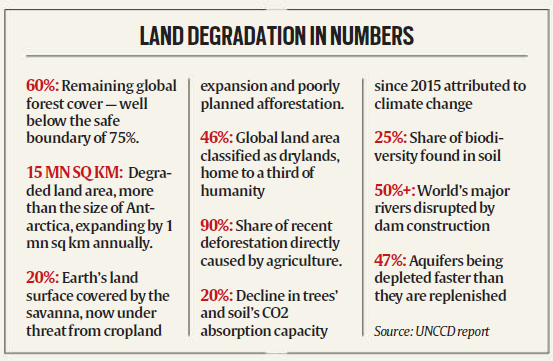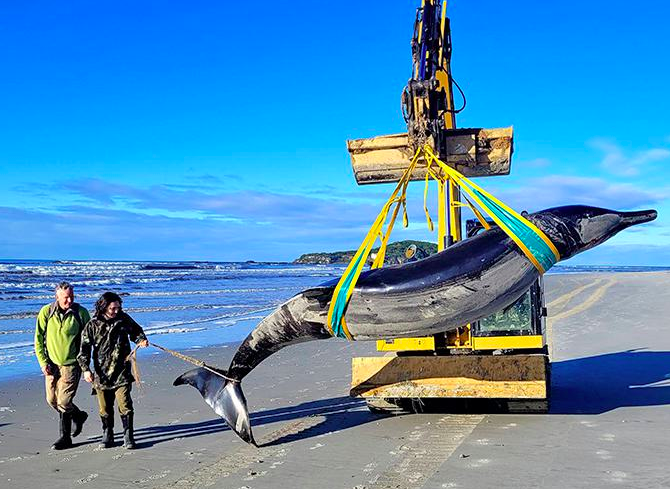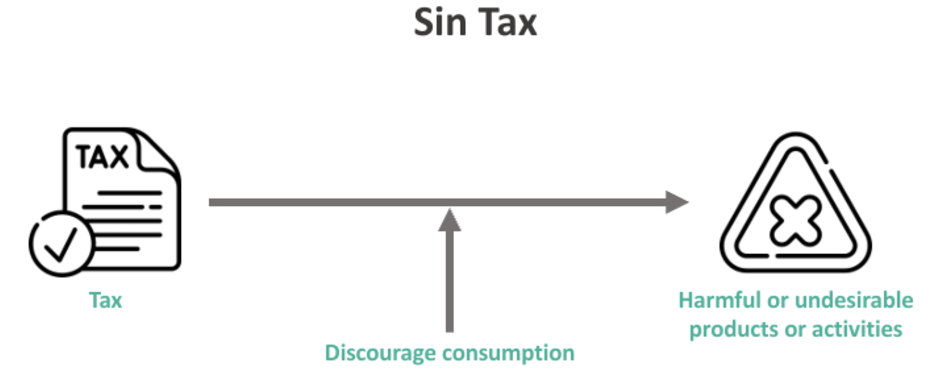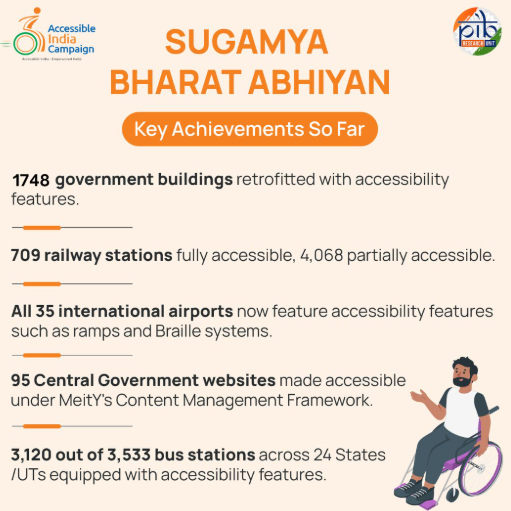3 December 2024 : Daily Current Affairs
1. Proudhon’s theory of mutualism: a critique of capitalism and authoritarianism
(Source – The Hindu, International Edition – Page No. – 11)
| Topic: GS3 – Economy |
| Context |
|
Theory of Mutualism
- Mutualism emphasizes voluntary cooperation, reciprocity, and the fair exchange of goods and services.
- It advocates for cooperative ownership of resources like land and tools, which are collectively managed for shared benefit.
- Ownership is based on use rather than profit, ensuring that resources are not exploited for personal gain.
- It supports worker-controlled production through cooperatives that align production with collective needs rather than market profit.
- Mutualism rejects hierarchical power structures, promoting equality and fairness in economic and social relations.
- It opposes state-imposed property rights, instead favoring decentralized systems of exchange and ownership.
- The theory distinguishes between “property,” which enables exploitation, and “possession,” which allows personal use without domination.
- It fosters shared interests and community solidarity, balancing individual freedom with collective well-being.
Critique of Capitalism and Authoritarianism
Critique of Capitalism
- Capitalism exploits labor by concentrating wealth and power in the hands of a few individuals or corporations.
- It prioritizes profit and accumulation over collective needs, leading to systemic inequality.
- Mutualism challenges the monopolization of property ownership under capitalism, which perpetuates exploitation.
- The capitalist system is criticized for enabling hierarchical control over resources and workers.
- Mutualism advocates for worker-controlled production systems as an alternative to capitalist profiteering.
Critique of Authoritarianism
- Authoritarianism enforces state-imposed property rights, which sustain exploitation and inequality.
- It centralizes power, creating systems that are coercive and counterproductive to individual freedom.
- Mutualism promotes voluntary and decentralized exchanges, ensuring equality and personal autonomy.
- It rejects the domination inherent in hierarchical state systems, proposing a society based on reciprocity and mutual aid.
- Mutualism encourages cooperative systems to avoid the domination of both the state and capitalism, fostering fairness and collective well-being.
| Practice Question: Discuss the principles of mutualism as an alternative economic theory. How does it critique capitalism and authoritarianism while proposing a decentralized approach to ownership and production? (150 Words /10 marks) |
2. India’s ‘One Nation, One Subscription’ plan
(Source – The Hindu, International Edition – Page No. – 10)
| Topic: GS2 – Governance |
| Context |
|

Shift Towards Open Access and ONOS’s Relevance
- Globally, the research ecosystem is transitioning towards Open-Access (OA) publishing, which makes scientific papers freely available.
- Over 53% of all scientific papers are now freely accessible, a significant rise since ONOS was first conceptualized in 2018-2019.
- Countries like the U.S. and the EU are mandating free access to publicly funded research by 2026, reducing reliance on subscription models.
- ONOS risks becoming outdated as more research becomes freely accessible.
| Introduction to the ONOS Scheme |
|
Challenges in the Existing Publishing Model
- The subscription-based publishing system is dominated by a few Western publishers who charge exorbitant fees.
- Researchers perform the core activities—conducting studies and peer reviews—without compensation, yet institutions pay publishers to access their work.
- Researchers must transfer copyrights to publishers, enabling misuse of their work, as seen in the Taylor & Francis-Microsoft controversy.
Opportunities for Indian Scholarly Publishing
- India has the potential to establish a robust indigenous publishing ecosystem, given its talent and resources.
- Preprinting, data sharing, and investments in Indian journals could reduce dependency on Western publishers.
- Self-reliant publishing would position India as a global leader in science and innovation.
Missed Opportunities in ONOS
- ONOS focuses on access but neglects critical reforms like copyright retention, green OA, and strengthening self-reliance in publishing.
- Without addressing these issues, ONOS risks being a costly temporary measure rather than a transformative solution.
Conclusion
- While ONOS has a laudable goal of democratizing knowledge, it requires structural changes to ensure long-term sustainability and relevance in the evolving research landscape.
| Practice Question: The ‘One Nation, One Subscription’ scheme aims to democratize access to research but raises questions about its relevance amidst the global shift towards Open Access publishing. (150 Words /10 marks) |
3. Land Degradation: A Growing Threat to Humanity and the Planet’s Future
(Source: Indian Express; Section: Explained; Page: 15)
| Topic: GS3 – Environment |
| Context: |
| The article highlights the severe global impacts of land degradation on ecosystems, human well-being, and climate, emphasizing the urgent need for sustainable land management. |
Analysis of News:
Land Degradation: A Global Crisis

- Land degradation, defined by the UNCCD as the reduction in the biological or economic productivity of ecosystems due to unsustainable practices, is a pressing global concern.
- A million square kilometers of land are degraded annually, with 15 million square kilometers already impacted.
- This widespread damage threatens Earth’s ability to sustain humanity, with consequences spanning food security, ecosystem health, and climate stability.
Impacts of Land Degradation
Human and Ecosystem Health:
- Reduces food quality and quantity, raising malnutrition risks.
- Increases waterborne and respiratory diseases due to erosion and water scarcity.
- Harms aquatic ecosystems through soil runoff laden with fertilizers and pesticides, affecting biodiversity and dependent communities.
Climate Change:
- Degraded land releases stored carbon, exacerbating global warming.
- Land ecosystems’ capacity to absorb carbon dioxide has dropped by 20% over the last decade, amplifying climate challenges.
Drivers of Land Degradation
Unsustainable Agricultural Practices:
- Overuse of chemicals, deforestation, and soil erosion degrade land.
- Excessive irrigation depletes freshwater reserves, while fertilizers destabilize ecosystems.
Climate Change:
- Global warming intensifies land degradation through extreme weather events and heat stress.
Urbanization:
- Expanding cities contribute to habitat destruction, pollution, and biodiversity loss.
Most Affected Regions
- Drylands, particularly in South Asia, northern China, the U.S. High Plains, California, and the Mediterranean, are among the worst-affected regions.
- Low-income countries, concentrated in tropical and arid zones, face disproportionate impacts due to limited resilience against land degradation’s cascading effects.
Conclusion
- The UNCCD’s report underscores the urgent need for sustainable land management to restore ecosystems, enhance carbon sequestration, and mitigate climate change impacts.
- Reversing land degradation is not just an environmental imperative but also critical for global food security, public health, and equitable development.
| Land Degradation in India |
|
The status of land degradation in India are listed as follows:
|
| Practice Question: Examine the causes and impacts of land degradation globally, with a focus on its link to climate change and its disproportionate effects on low-income countries. Suggest sustainable strategies to address this challenge. (250 words/15 m) |
4. Addressing Prison Overcrowding: Supreme Court Report Advocates Electronic Monitoring with Safeguards
(Source: Indian Express; Section: Explained; Page: 15)
| Topic: GS2 – Governance |
| Context: |
| The article discusses the Supreme Court’s recommendations for using electronic monitoring to alleviate overcrowding in Indian prisons while addressing privacy, human rights, and implementation challenges. |
Analysis of News:
Overcrowding in Indian Prisons
- India’s prisons, as of December 2022, faced an alarming occupancy rate of 131.4%, housing 5,73,220 inmates against a capacity of 4,36,266.
- Over 75% of these prisoners were undertrials, highlighting a systemic issue in the criminal justice system.
- A Supreme Court report, Prisons in India: Managing Prison Manuals and Measures for Reformation and Decongestion, has proposed electronic monitoring as a potential solution to reduce the number of undertrial prisoners.
Electronic Monitoring as a Solution
- The report recommends the use of electronic tracking devices, such as ankle bracelets, for individuals granted bail.
- This method is considered cost-effective, with monitoring costs in Odisha, for instance, estimated at Rs 10,000–15,000 annually per person compared to Rs 1 lakh for traditional incarceration.
- The Parliamentary Standing Committee on Home Affairs has also endorsed electronic tracking with safeguards to ensure its proper implementation.
Lessons from the U.S.
- The U.S. experience with electronic monitoring offers valuable insights. Studies, including those by the American Civil Liberties Union, critique it as “e-carceration,” expanding punitive measures beyond prison walls.
- Marginalized communities, such as Scheduled Castes, Scheduled Tribes, and OBCs in India, who are overrepresented in prisons, could face disproportionate surveillance and stigma.
- Furthermore, costs in the U.S. are often borne by the monitored individuals, raising concerns about inequities and financial burdens.
Privacy and Human Rights Concerns
- The Supreme Court of India has emphasized the right to privacy under Article 21, ruling against invasive bail conditions like GPS tracking without consent.
- Reports by the Law Commission and Standing Committee stress that electronic monitoring must respect constitutional rights, be voluntary, and avoid human rights violations.
- Similar practices in the U.S. involve random testing and invasive home visits, which could undermine bodily autonomy and personal dignity.
Recommendations and Safeguards
- Voluntary Use: Electronic monitoring should require informed consent to prevent coercion and uphold human rights.
- Limited Application: It should be restricted to serious crimes and repeat offenders to balance security concerns with individual rights.
- Government-Funded: To avoid financial inequities, the state must bear the costs of monitoring.
- Stigma Mitigation: Devices should be discreet to reduce social ostracism and psychological impact.
- Legal Oversight: Robust laws and mechanisms must regulate the use of tracking technology to prevent abuse and protect privacy.
In conclusion, while electronic monitoring offers a pathway to address prison overcrowding, its implementation must prioritize ethical and constitutional safeguards to prevent misuse and discrimination.
| Advantages of Electronic Tracking of Undertrial Prisoners |
|
| Practice Question: Discuss the feasibility and implications of electronic monitoring as a solution to decongest Indian prisons, considering issues of privacy, human rights, and cost-effectiveness. (250 words/15 m) |
Prelims Facts
1. Scientists in NZ gather to decode puzzle of rarest whale
(Source – The Hindu, International Edition – Page No. – 7)
| Context |
|
Analysis of the news:
- The spade-toothed whale is the world’s rarest whale, with only seven recorded specimens and no live observations at sea.
- A near-perfectly preserved spade-toothed whale was discovered dead on a New Zealand beach in July, providing a rare research opportunity.

- This marks the first-ever dissection of the species, aiming to explore its anatomy, feeding system, sound production, and potential parasites.
- The species’ habitat, behavior, and biological processes remain largely unknown.
- Earlier specimens were identified through DNA sequencing in 2002, confirming them as a distinct species of beaked whale.
- Previous discoveries include skeletal remains in New Zealand (1872 and 1950s) and Chile (1986), with intact specimens found in 2010.
- The dissection is conducted with cultural sensitivity, in partnership with New Zealand’s Indigenous Maori, who regard whales as ancestral treasures.
- New Zealand’s history as a whale-stranding hotspot has recorded over 5,000 episodes since 1840.
2. Manipur records dip in poppy cultivation by 32.13%: MARSAC
(Source – The Hindu, International Edition – Page No. – 5)
| Context |
|
More About Poppy Plant:
- The poppy plant (Papaver somniferum) is native to the Mediterranean region.
- It is cultivated for its seeds, oil, and opium, which contains alkaloids like morphine and codeine.
- Poppy seeds are commonly used in baking and cooking.
- The opium extracted from the plant is the primary source of narcotics such as heroin.
- Poppy plants typically grow to 3-4 feet tall and produce large, colorful flowers.
- The opium-producing varieties are often grown illegally in several regions worldwide.
- Poppy cultivation is a significant issue in countries like Afghanistan, Myanmar, and parts of India, including Manipur.
- Poppy farming contributes to illicit drug production, fueling global drug trade and addiction issues.
- Legal cultivation occurs under strict regulations for medicinal purposes, such as in pharmaceutical production.

3. Oxford study lauds PRAGATI system for fast-tracking projects
(Source – The Hindu, International Edition – Page No. – 6)
| Context |
|

PRAGATI System:
- PRAGATI stands for Pro-Active Governance and Timely Implementation of projects.
- It was launched by the Prime Minister to monitor infrastructure projects across India.
- The system aims to overcome bureaucratic inertia and promote efficiency, accountability, and timely completion.
- PRAGATI integrates stakeholders from Central and State governments on a single platform.
- It focuses on resolving challenges like land acquisition, inter-ministerial coordination, and project delays.
- The system has accelerated 340 projects worth $205 billion, contributing to economic transformation.
- It enhances GDP by ₹2.5 to ₹3.5 for every rupee spent on infrastructure.
- PRAGATI promotes the use of green technologies and sustainability in development projects.
- It has improved the quality of life by fast-tracking infrastructure services like roads, railways, and electricity.
4. GST Overhaul: Special 35% Rate for Sin Goods, Tax Cuts on Essentials Proposed
(Source: Indian Express; Section: Cover Page; Page: 01)
| Context: |
|
Analysis of News:
Sin goods:
- Sin goods are goods which consider harmful to society.
- Example of sin goods: Alcohol and Tobacco, Candies, Drugs, Soft drinks, Fast foods, Coffee, Sugar, Gambling and Pornography.
What is sin tax?

- It is placed on goods that adversely affect health, most notably tobacco and alcohol.
Three principal arguments are used to justify this type of taxation:
- It can reduce consumption through increased prices.
- Compensate society for things like increased health system costs.
- Increase resources for the health sector.
Why is it important?
- That excessive consumption of tobacco, alcohol or empty calories heightens health risks such as cancer, heart conditions and obesity, is quite well-documented by now.
- Evidence from other countries that have imposed Sin Taxes shows the consumption of cigarettes and soft drinks has fallen significantly, after the new tax.
- The huge revenues many State governments in India rake in from liquor sales (and taxes) show that Sin Taxes can mean a bonanza for the State.
Revised Tax Structure for Various Goods
The GoM has proposed multiple rate adjustments:
- Readymade Garments: 5% GST for garments priced up to ₹1,500, 18% for those between ₹1,500 and ₹10,000, and 28% for garments above ₹10,000.
- Luxury Items: High-end products like cosmetics, watches, and shoes are proposed to move to higher tax slabs to align taxation with pricing and target affluent buyers.
- Lower GST for Essential Items: Items like packaged water above 20 liters, bicycles under ₹10,000, and exercise notebooks may see reduced GST rates.
Implications of the Proposed Changes
- Revenue Augmentation: The higher GST on demerit and luxury goods is expected to compensate for revenue losses due to tax cuts on essential items.
- Equity in Taxation: The new structure links taxation to affordability, ensuring higher contributions from luxury product consumers.
- Compliance Challenges: Implementation may pose administrative challenges in categorizing goods and enforcing new rates.
- Economic Impact: While reduced GST on essentials benefits the general population, increased rates on luxury items may impact high-end consumption.
5. Objectives of SHAKTI Yojana
(Source – https://pib.gov.in/PressReleseDetail.aspx?PRID=2079744®=3&lang=1 )
| Context |
|
Key Features Of The Scheme:
- Fuel Supply Agreements (FSA): Coal is allocated to power plants with valid Letters of Assurance (LoA) that meet required conditions.
- Coal Linkages:
- For public sector power plants, coal is allocated at notified prices.
- Independent Power Producers (IPPs) bid for linkages based on discounted tariffs.
- Power producers without Power Purchase Agreements (PPAs) get linkages through auctions.
- Support for New Projects: Fresh coal linkages are allocated for new PPAs to States.
- Group Power Needs: Aggregated procurement for multiple States is facilitated.
Benefits
- Provides assured coal supply for power generation.
- Promotes competition and reduces tariffs through auction-based allocations.
- Supports stressed power assets by enabling coal supply for short-term needs.
Outcome
- SHAKTI ensures efficient coal use, supports energy needs, and enhances transparency in the power sector.
6. SCHEMES TO REVIEW MSME SECTOR FACING CRISIS
(Source – https://pib.gov.in/PressReleseDetail.aspx?PRID=2079786®=3&lang=1 )
| Context |
|
Credit Guarantee Scheme (CGS)
- CGS strengthens credit delivery systems for Micro and Small Enterprises (MSEs) by offering collateral-free credit up to ₹500 lakh.
- Term loans and working capital facilities qualify under this scheme.
Union Budget 2024-25 Support
- Financing, regulatory reforms, and technology support for MSMEs include:
- Promotion of MSMEs and manufacturing sector-specific credit guarantee schemes.
- A new assessment model for MSME credit and enhanced Mudra loan limits from ₹10 lakh to ₹20 lakh.
- Credit support during stress periods and mandatory onboarding in TReDS.
- Establishment of SIDBI branches in MSME clusters and e-commerce export hubs.
Marketing and Procurement Support
- Public Procurement Policy: Mandates 25% annual procurement from MSMEs, including 4% from SC/ST and 3% from women-owned enterprises.
- Marketing Schemes: Procurement and Marketing Support Scheme enhances MSME participation in trade fairs and exhibitions.
- International Cooperation Scheme: Encourages exports and facilitates MSME participation in international events.
- Capacity Building for Exporters: Supports first-time exporters by reimbursing costs for certifications, insurance, and testing.
| PYQ: Faster economic growth requires increased share of the manufacturing sector in GDP, particularly of MSMEs. Comment on the present policies of the Government in this regard. (150 words/10m) (UPSC CSE (M) GS-3 2023) |
| Practice Question: Discuss the significance of the MSME sector in India’s economic growth and evaluate the impact of government schemes, such as the Credit Guarantee Scheme and Public Procurement Policy, in addressing challenges faced by the sector. (150 Words /10 marks) |
7. Sugamya Bharat Abhiyan
(Source – https://pib.gov.in/PressReleseDetail.aspx?PRID=2079826®=3&lang=1 )
| Context |
|
Key Achievements

1. Accessible Infrastructure:
- Accessibility audits were conducted for 1,671 government buildings.
- Retrofitting for accessibility features was completed in 1,748 government buildings, including 1,100 Central and 648 State/UT buildings.
- A fund of ₹562 crore was allocated for retrofitting projects.
2. Accessible Transportation:
- All 35 international airports and 55 out of 69 domestic airports have accessible features such as ramps, Braille systems, and lifts.
- 709 railway stations are fully accessible, and 29% of buses have some accessibility features.
3. Digital Accessibility:
- 95 Central Government websites and 476 State Government websites have been made accessible.
- A plan to make an additional 500 government websites accessible is under implementation.
4. Education and Language Accessibility:
- The Indian Sign Language Research and Training Centre (ISLRTC) was established in 2015 to promote Indian Sign Language (ISL).
- Over 1,013 individuals have received ISL training.
Innovative Initiatives
- Sugamya Bharat App: A platform to report accessibility issues with features for font adjustments and screen readers.
- Accessibility measures have been initiated for 75 pilgrimage sites and integrated into training programs for government officers.
Financial Commitment
- Budget allocation increased significantly from ₹560 crore (2013-14) to ₹1,225.15 crore (2023-24).
Conclusion
- The campaign now functions under the Scheme for Implementation of the Rights of Persons with Disabilities Act (SIPDA), ensuring a sustained focus on accessibility and inclusivity.




